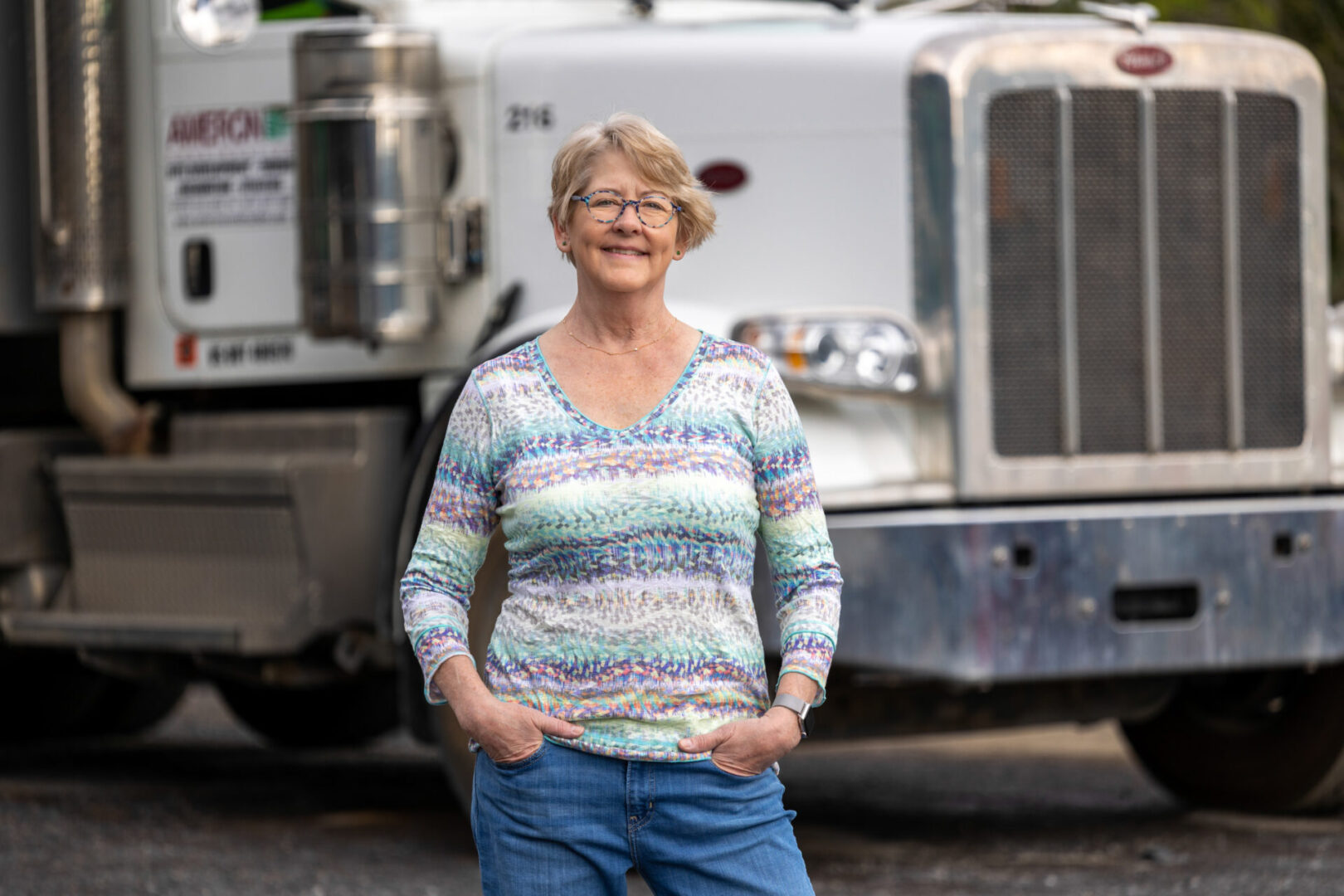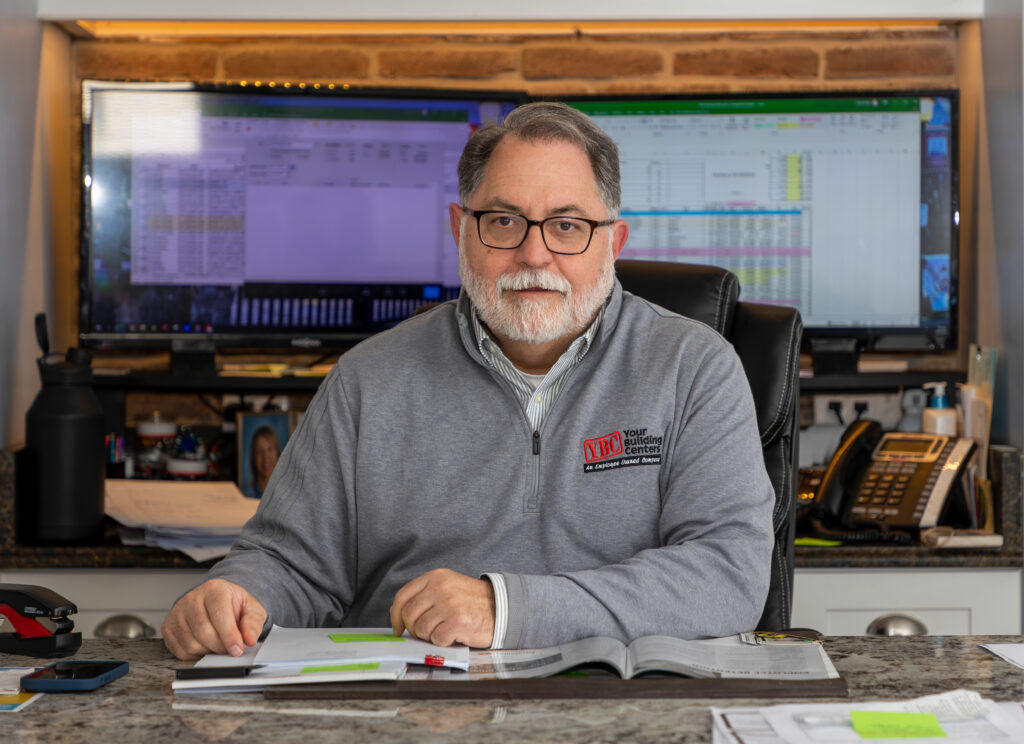
Alison Kurtz, Ameron Construction (Photo by David Silber)

Alison Kurtz, Ameron Construction (Photo by David Silber)
When Dorsey Houtz’s co-founders at Avail Technologies, Mike Lynn and David Matta, started to think about retiring, the three partners had several options.
“The easiest one, and the most lucrative one for us, would have been to just sell the company. But we felt that that wouldn’t have been the right thing to do for the employees. In our careers, we had gone through many acquisitions with larger companies, and we knew what it did to the company and the people who worked there,” Houtz says.
Instead, he says, “After a great deal of discussion, we decided to turn Avail into an employee-owned company.”
In 2007, Avail Technologies converted to the Employee Stock Ownership Plan (ESOP) business model. Matta retired the same year, while Lynn retired several years later. Houtz remains the president/CEO of the company, which currently employs 106 people.
About a year later, Paul Silvis decided to do the same thing with his Bellefonte-based company, Restek, not only because he wanted to reward the employees that had helped the company become successful, but, he says, “I also felt an obligation to Centre County, and becoming an ESOP really strongly planted Restek here.”
Houtz and Silvis are just two of many business leaders who are passionate about the ways an ESOP can benefit employees, businesses, and the community at large.
ESOP Basics
To truly understand ESOP’s benefits, it is necessary to understand the way the structure works.
As with Avail, it often comes about as an exit strategy for a business owner who wants to leave a legacy upon retirement, keeping intact the company they have built and rewarding the employees who have helped it grow.
The owner will sell all or part of their shares in the business to a tax-exempt employee trust fund, which purchases the shares using a loan from a traditional source such as a bank. Once a business becomes an ESOP, it never has to pay federal or state income taxes again. The tax savings are used to pay off the loan and, eventually, to help the company grow.
Employees start receiving shares of stock annually based on a timeline set when the ESOP is established—often after a full year of employment. The price of each share is formally set by an annual valuation of the company, and after what is usually a three-year or a six-year vesting period, employees can cash in their shares upon retirement or upon leaving for other reasons.
It is admittedly a complex concept, but Houtz boils it down: “If you want to look at it in a simplistic manner, you can look at an ESOP as a second 401(k) program. The only difference is, this one is fully funded by the company and you don’t have to put any money into it.”
According to Kevin McPhillips, executive director of the Pennsylvania Center for Employee Ownership (PaCEO), there are over 300 ESOP companies in Pennsylvania today. Only California has more. Besides Avail Technologies and Restek, PaCEO lists three more ESOP companies headquartered in Centre County: Ameron Construction Inc., PennTerra Engineering, and Remcom Inc. Other Pennsylvania ESOP companies with a prominent local presence include Hoss’s Steak and Sea House, Sheetz, and Your Building Centers (YBC), all of which are based in Blair County.
‘We care because we own it’
If you have spent much time in central Pennsylvania, you may be able to sing along with the YBC jingle. But how many of us have really stopped to consider the meaning behind the tagline?
“I don’t really like the jingle, but is there anything more true?” says Doug Olson, manager of YBC’s State College location.
It makes sense that employees who are invested in the success of the company will strive to provide the best possible products and services, he says, because, “At the end of the day, we really are being paid by the customers who walk through our doors.”
“The concept of doing business with the owners of a company should give you some confidence that you’re going to get a better quality project than from somebody who’s just an hourly employee. These people are representing themselves,” adds Alison Kurtz, president of Ameron Construction, which has been an ESOP since 1995.
Employee ownership also often leads to company growth by encouraging employee retention and motivating employees to make the business as profitable as possible.
“Employee-owned businesses are on average eight to twelve percent more productive than non-employee-owned businesses,” says McPhillips. “That’s because employees have a stake in the game.”

Creating an ESOP Culture
Of course, employees must understand the value of their stake in the business in order for it to really make a difference. It can be challenging to keep workers educated and excited about employee ownership, especially those under 40, for whom retirement can seem like a lifetime away, Kurtz says.
“It’s hard for people to understand the benefit when it’s not immediate,” she says.
Houtz says it was easy to explain to people when Avail first transitioned to ESOP because all of the employees were learning about the concept at once, but fifteen years later, with employees coming on board one at a time, it is harder to stay on top of educating them.
The best way to counteract that issue is by communicating with employees constantly about ownership, using an open-book management style, and working to create an “ESOP culture,” according to Olson, who heads his company’s ESOP committee. The committee publishes a newsletter, hosts a company picnic, and makes a big deal out of announcing the stock price upon the company’s annual valuation. Olson also travels to YBC’s 20 locations to talk to employees and managers about employee ownership.
Bryan Wolcott, head coach/CEO of Restek, says creating that ownership culture includes doing things like providing regular ESOP educational programs and holding a company-wide annual meeting. During that meeting, Restek makes the eagerly awaited announcement of the current year’s stock price and presents vests to employees who have reached the six-year mark to become completely vested in the company.
Their efforts have been successful, Wolcott says.
“New people always tell me they are amazed at how helpful everybody is, which makes sense, because if we all own it, we better help each other,” he says. “Restek maintains a healthy culture, and we do a lot of things to motivate employees.”
That motivation includes holding a “profit challenge,” a contest of sorts in which employees are encouraged to come up with innovative ways for the company to either make or save money.
At SilcoTek, a spin-off of Restek, employees are already being educated about the basics of employee ownership, although the company is still a year or two away from transitioning to an ESOP. Geoff White, SilcoTek’s general counsel, says the company’s employee-focused culture, which emphasizes values like transparency and servant leadership, should make the transition almost seamless.
“Our core values perfectly align with what you need to do as an ESOP. We already share all of our financials company-wide; we are honest with all of our employees, even in sharing hard truths,” White says. “We’re set up so that we should be able to transition well. The employees are definitely excited and in support of it.”
Changing Lives
Olson says he is passionate about his role on YBC’s ESOP committee because he wants to “pay it forward.”
“I want to help these younger guys understand exactly what it is they have. Because it changed my wife’s and my life; it really did,” he says. “I was in my early forties and working at ML Claster’s and I didn’t have a penny saved for retirement when YBC bought us in 1997.”
Today, Olson says, he has earned enough shares through the ESOP that he could comfortably retire right now, although he is not planning to leave just yet.
The ability to retire early is the “double-edged sword” aspect to an ESOP, says Wolcott, “because it means we might lose somebody with a lot of experience who retires early and goes off to do something else. But that’s a healthy thing.”
When people truly understand what they stand to gain, they may actively seek to work for an ESOP company, McPhillips says. In fact, that’s exactly how Irene Miller Wetzel came to PennTerra Engineering, which she joined last year as business development manager.
Wetzel formerly worked for the Chamber of Business & Industry of Centre County, where, she says, “We hosted Kevin [McPhillips] every year for an ESOP presentation, so I learned about it. When I was ready to start a new chapter, it was at the top of my list. I wanted ESOP and I wanted a good environment.”
This is not surprising to John Sepp, PennTerra’s president, who says, “The ESOP structure makes PennTerra an attractive place to work, and we hold our employees here. It keeps the company strong and grounded in State College.”
This touches on something McPhillips says makes ESOP a big benefit to the community at large.
“Employee ownership keeps businesses where they are. They don’t get sucked up by private equity and resold, they don’t get stripped down, they don’t get pulled overseas or elsewhere, so they preserve communities. They create good jobs. Wages are thirty percent higher on average in employee-owned businesses. We think employee ownership is really part of the solution when it comes to dealing with the wealth gap,” he says.
Making the Transition
With so many benefits, why doesn’t every company transition to ESOP?
For one thing, the structure falls under the purview of the Department of Labor and the Employee Retirement Income Security Act, and there are standards that must be met, McPhillips says.
“For example, the company has to be profitable. This is not an alternative to bankruptcy,” he says.
In addition, the business must have at least twenty employees.
“The sweet spot is really thirty to four hundred employees. They tend to be closely held, family-owned businesses, not large corporations,” he says.
McPhillips says twenty-two percent of ESOPs are manufacturing firms, followed by construction, engineering, architecture, and information technology companies.
For owners considering ESOP, there are several factors to keep in mind. The Department of Labor requires an annual valuation of the business, which costs money. The switch also requires careful planning from the start, as far as setting a vesting schedule and deciding how to carve up the shares—i.e., based on salary, seniority, or divided equally.
An organization like PaCEO or the National Center for Employee Ownership (NCEO) can help business owners navigate the complexities of starting an ESOP, which McPhillips says normally takes about three or four months to establish once the decision is made to do so.
Houtz offers this piece of advice to owners considering ESOP: “It’s something you need to be committed to. You can’t do it on a whim. At the end of the day, if you’re the type of owner that’s just trying to cash out in the biggest way to benefit yourself, becoming an ESOP is not for you. If you want to give back, though, to the employees who’ve made you successful, and if you want to leave behind a legacy of a company that continues to operate even though you’re no longer there, then an ESOP is for you.” T&G
Karen Walker is a freelance writer in State College.
Receive all the latest news and events right to your inbox.

403 S. Allen Street
State College, PA 16801
Phone: 814-238-5051
